Beauty First
 We heard the news in December about the Ukrainian President candidate Viktor Yushchenko. It appeared that he was poisoned with dioxin, a chemical that could bring a man to death. One of the side effects left his face pockmarked and ashen, which will eventually disappear, but this previously good-looking face now looks heavier, and filled with crater-like acne. Tests revealed the poisoning two weeks before the election. We heard the news in December about the Ukrainian President candidate Viktor Yushchenko. It appeared that he was poisoned with dioxin, a chemical that could bring a man to death. One of the side effects left his face pockmarked and ashen, which will eventually disappear, but this previously good-looking face now looks heavier, and filled with crater-like acne. Tests revealed the poisoning two weeks before the election.
 I’ve heard these things on the news about Yushchenko’s condition, and most of the time people mentioned that we would be fine now that he is bring treated, but otherwise they talk about the condition of his face. The fact that it has altered the way he looks. But at the end of every story, they make sure to stress that Yushchenko was a good-looking man, and he will gain his looks back when this disease is completely out of his system (which should be from one to three years). I’ve heard these things on the news about Yushchenko’s condition, and most of the time people mentioned that we would be fine now that he is bring treated, but otherwise they talk about the condition of his face. The fact that it has altered the way he looks. But at the end of every story, they make sure to stress that Yushchenko was a good-looking man, and he will gain his looks back when this disease is completely out of his system (which should be from one to three years).
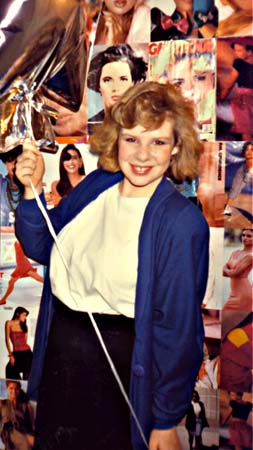
 Did you know that dioxin was one of the ingredients in Agent Orange? Now the company Monsanto altered it slightly, called it RoundUp, and now has it as a weed killer. Did you know that dioxin was one of the ingredients in Agent Orange? Now the company Monsanto altered it slightly, called it RoundUp, and now has it as a weed killer.
 But you’d see photos of Yushchenko before the dioxin poisoning, which they guess could have been put in his soup once (his Chicago-native wife even remembered tasting something on his lips one night months ago), and the news reports would say, ‘look at how good looking Yushchenko was, and look at him after months of exposure to dioxin.’ But you’d see photos of Yushchenko before the dioxin poisoning, which they guess could have been put in his soup once (his Chicago-native wife even remembered tasting something on his lips one night months ago), and the news reports would say, ‘look at how good looking Yushchenko was, and look at him after months of exposure to dioxin.’
 Interesting. Interesting.
 That’s interesting to me, because hearing these stories reminds me how how interested everyone is in how we look. That’s interesting to me, because hearing these stories reminds me how how interested everyone is in how we look.
 Beauty first. Beauty first.
 It makes me think about television shows that do countdowns of the most beautiful dresses, or couples, or men or women out there — because people need to know which movie and television stars are the most beautiful, so they know who to mold themselves after and aspire to look like. It makes me think about television shows that do countdowns of the most beautiful dresses, or couples, or men or women out there — because people need to know which movie and television stars are the most beautiful, so they know who to mold themselves after and aspire to look like.
 Those same networks have shows where female models and actors discuss the need for plastic surgery to stay ahead in the industry. There are parents who want to give their daughter breast implants for her sixteenth birthday. Those same networks have shows where female models and actors discuss the need for plastic surgery to stay ahead in the industry. There are parents who want to give their daughter breast implants for her sixteenth birthday.
 Come on , I wasn’t even fully developed by age sixteen. Come on , I wasn’t even fully developed by age sixteen.
 And my parent’s would never have thought that my self esteem would be helped by surgically putting silicone under my skin to make me primed for the objectification. And my parent’s would never have thought that my self esteem would be helped by surgically putting silicone under my skin to make me primed for the objectification.
 It makes me think of Miss America, where they parade a bunch of women around in fancy dresses and in swimsuits (and make people think this contest is about more than looks by having a “talent” section as well, that most people turn off when they’re watching it on TV). For that matters, there’s the Miss Universe pageants, or pageant of each of all of the United States, even child pageants (wait, wasn’t Jean Benet Ramsey a five year-old model before her parents... er, I mean, before someone, killed her?) It makes me think of Miss America, where they parade a bunch of women around in fancy dresses and in swimsuits (and make people think this contest is about more than looks by having a “talent” section as well, that most people turn off when they’re watching it on TV). For that matters, there’s the Miss Universe pageants, or pageant of each of all of the United States, even child pageants (wait, wasn’t Jean Benet Ramsey a five year-old model before her parents... er, I mean, before someone, killed her?)
 In fact, I just heard of a pageant in China for “Miss Artificial Beauty” — created because women in beauty pageants got angry that they had to compete against women with so much plastic surgery done on them. So “Miss Artificial Beauty” is a pageant of women who have gone through a lot of plastic surgery. In fact, I just heard of a pageant in China for “Miss Artificial Beauty” — created because women in beauty pageants got angry that they had to compete against women with so much plastic surgery done on them. So “Miss Artificial Beauty” is a pageant of women who have gone through a lot of plastic surgery.
 And recently, they even had a contestant that was once a man. And recently, they even had a contestant that was once a man.
 Now, that’s a lot of plastic surgery. Now, that’s a lot of plastic surgery.
 It makes me think of cheerleaders. I know, I know, they do a lot of more physical, acrobatic work now as cheerleaders, but in general they have been used as sidelines entertainment, dressed in skimpy clothes and dancing provocatively, for men to keep them entertained during sports game breaks. It makes me think of cheerleaders. I know, I know, they do a lot of more physical, acrobatic work now as cheerleaders, but in general they have been used as sidelines entertainment, dressed in skimpy clothes and dancing provocatively, for men to keep them entertained during sports game breaks.
 I know, women watch sports now too, but they haven’t been able to get rid of this sexist practice yet. I know, women watch sports now too, but they haven’t been able to get rid of this sexist practice yet.
 But seeing this focus on Yushchenko’s looks makes me think about how many women aspire to be models (well, some men want to be models too, because Hell, why would you want to aspire to excel by using your brain?) The notion is to try to excel, based only on your looks. Remember that. But seeing this focus on Yushchenko’s looks makes me think about how many women aspire to be models (well, some men want to be models too, because Hell, why would you want to aspire to excel by using your brain?) The notion is to try to excel, based only on your looks. Remember that.
 It makes me think about department store make-up counters (sometines they’re almost as big as the clothing departments). If you have to wear the right clothes to look good, you have to make up your face so it looks good too. It makes me think about department store make-up counters (sometines they’re almost as big as the clothing departments). If you have to wear the right clothes to look good, you have to make up your face so it looks good too.
 It makes me think... You know, it makes me think that there are a lot of ways women are supposed to be made to look good. It makes me think... You know, it makes me think that there are a lot of ways women are supposed to be made to look good.
 Oh, but wait, this was not supposed to be a talk about how women have to look got for men. The point was about the fact that everyone is concerned with looks in our society. The point was that this man running for Ukrainian president was poisoned — but more importantly, a side effect is that he looks like an old man with bad acne because of it. Oh, but wait, this was not supposed to be a talk about how women have to look got for men. The point was about the fact that everyone is concerned with looks in our society. The point was that this man running for Ukrainian president was poisoned — but more importantly, a side effect is that he looks like an old man with bad acne because of it.
 Good thing they caught it in time, because now he won’t have too look so ugly forever. Good thing they caught it in time, because now he won’t have too look so ugly forever.
•••

 “Damnit girl, you’re bitching a lot. People depend on looks, and i’m sure you do too, Janet. Hell, I’ve heard you say that you loved the fact that your husband is tall. That’s based on looks, isn’t it?” “Damnit girl, you’re bitching a lot. People depend on looks, and i’m sure you do too, Janet. Hell, I’ve heard you say that you loved the fact that your husband is tall. That’s based on looks, isn’t it?”

 I hate it when I let my alter ego get a hold of me during my editorials, forcing me to not be do one-sided. I hate it when I let my alter ego get a hold of me during my editorials, forcing me to not be do one-sided.
 And by the way, my husband is really good looking. And by the way, my husband is really good looking.
 And yes, looks do matter. I know that any single person interested in meeting someone will look for cute people first. I know that a person’s looks can tell you nothing about their personality, but if you’re going to be dating someone, it might as well be something other people are envious of. Know that I mean? And yes, looks do matter. I know that any single person interested in meeting someone will look for cute people first. I know that a person’s looks can tell you nothing about their personality, but if you’re going to be dating someone, it might as well be something other people are envious of. Know that I mean?
 And yeah, when you’re interested in meeting people, you’ll look for the good-looking person. Then you’ll try to talk to them, to see if their personality matches their good looks. And maybe, on a personal level, we use that as one of our rulers for judging people. And yeah, when you’re interested in meeting people, you’ll look for the good-looking person. Then you’ll try to talk to them, to see if their personality matches their good looks. And maybe, on a personal level, we use that as one of our rulers for judging people.
 You know, because we’re all so interested in good looks. You know, because we’re all so interested in good looks.
 But then consider about how good looks effect popularity of people on a mass scale. Like consider actors in movies or television - the better looking you are, the better your chances at getting good roles, because there’s a better chance more people would like to stare at you on the big screen. And when it comes to politics, it’s much easier to be sweet-talked by a good-looking politician than an ugly looking hermit. But then consider about how good looks effect popularity of people on a mass scale. Like consider actors in movies or television - the better looking you are, the better your chances at getting good roles, because there’s a better chance more people would like to stare at you on the big screen. And when it comes to politics, it’s much easier to be sweet-talked by a good-looking politician than an ugly looking hermit.
 Consider that President Kennedy was a looker (by some standards), that there are theories that Marilyn Monroe had a fling with him, even though many people had a lot of problems with his policies. And think of what you think of when you think of President Nixon: well, you think of Watergate, and him resigning to avoid impeachment. Oh, and also think of his looks. Don’t his looks reflect what we think of his presidency? Consider that President Kennedy was a looker (by some standards), that there are theories that Marilyn Monroe had a fling with him, even though many people had a lot of problems with his policies. And think of what you think of when you think of President Nixon: well, you think of Watergate, and him resigning to avoid impeachment. Oh, and also think of his looks. Don’t his looks reflect what we think of his presidency?
 Consider that Americans want to give President Clinton credit for the Internet boom, and people forget that the crash of the dot com industry happened in the last six months of his second term. Consider that Americans want to give President Clinton credit for the Internet boom, and people forget that the crash of the dot com industry happened in the last six months of his second term.
 Consider that fact that Bill Clinton had repeated sexual encounters with an overweight intern, and people considered impeaching him. But that’s not how he’ll be remembered: Bill Clinton was not a gorgeous man, but he was not old, and he had a suave personality and interacted well with people, he had the right tone to his voice, he gave you the impression that he “felt” for you and “understood” what you were going through. Consider that fact that Bill Clinton had repeated sexual encounters with an overweight intern, and people considered impeaching him. But that’s not how he’ll be remembered: Bill Clinton was not a gorgeous man, but he was not old, and he had a suave personality and interacted well with people, he had the right tone to his voice, he gave you the impression that he “felt” for you and “understood” what you were going through.
 Yes, in America it often seems to be all about looks. But although he had age on his side, this may be some evidence that personality goes a long way. Yes, in America it often seems to be all about looks. But although he had age on his side, this may be some evidence that personality goes a long way.
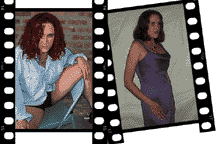

|

Janet Kuypers
Editor In Chief
|


poetry
the passionate stuff

The Slapping
Michelle Greenblatt
a girl who found a boy
that beat her asked
herself “what does
this make me?” while standing
straight up for the slapping, afraid
to rock
back from the blows, the permanent & blue
dents on her cheeks / brain almost
listening for something
besides the questions she asked
while her face looked
more like a fruit gone
bad than her facebeforehim, she knew:
afterwards they would lie
in bed, she would write, & he
would read it, take it or tear
it up. burn, she thought,
burn.
5.11-13.2005
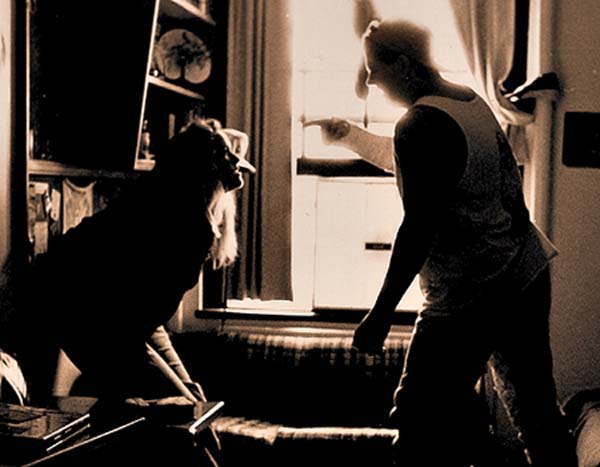
 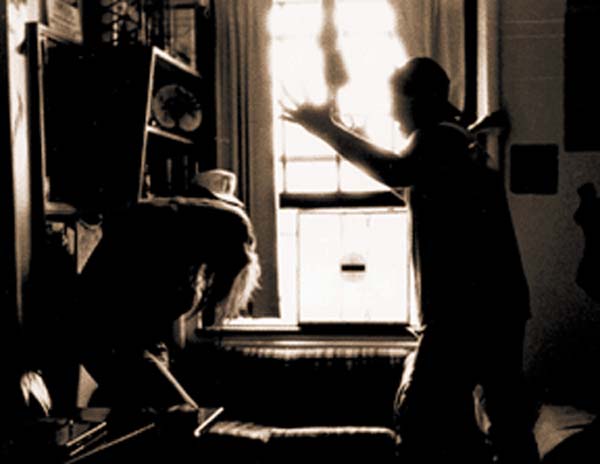


news you can use

The Faith-Based Attack on Rational Government
 As “people of faith” step up their crusade to inject religion into judicial decision-making, people of reason must understand why America should be a wholly secular state. As “people of faith” step up their crusade to inject religion into judicial decision-making, people of reason must understand why America should be a wholly secular state.
 By Thomas A. Bowden By Thomas A. Bowden
 They call themselves “people of faith,” and they are waging war against a basic principle of American government: the separation of church and state. Complaining that our secular culture has improperly banished God from government, religious conservatives are working tirelessly to inject faith-based decision-making into America’s legal system. They call themselves “people of faith,” and they are waging war against a basic principle of American government: the separation of church and state. Complaining that our secular culture has improperly banished God from government, religious conservatives are working tirelessly to inject faith-based decision-making into America’s legal system.
 This conservative onslaught requires a bold defense of the secular state--by people of reason. This conservative onslaught requires a bold defense of the secular state--by people of reason.
 Although that defense must encompass all branches of government, today’s battleground is the courtroom, where judges find themselves under relentless pressure to legitimize religious dogmas such as the sanctity of the God-given soul (the Terri Schiavo case, anti-abortion laws, stem cell research), the literal truth of holy scripture (laws against homosexuality, displays of the Ten Commandments in courthouses), and the recognition of God as master of the universe (creationism, prayer in public schools). The First Amendment, conservatives declare, guarantees only freedom “of” religion, not freedom “from” religion. Although that defense must encompass all branches of government, today’s battleground is the courtroom, where judges find themselves under relentless pressure to legitimize religious dogmas such as the sanctity of the God-given soul (the Terri Schiavo case, anti-abortion laws, stem cell research), the literal truth of holy scripture (laws against homosexuality, displays of the Ten Commandments in courthouses), and the recognition of God as master of the universe (creationism, prayer in public schools). The First Amendment, conservatives declare, guarantees only freedom “of” religion, not freedom “from” religion.
 To their credit, secular judges have valiantly resisted the religious right’s persistent advances. In response, frustrated conservatives are leveraging their newfound dominance over Congress and the presidency in a crusade to emasculate the judiciary. Whether it’s senators limiting filibusters, or Congress threatening to reorganize the court system, or President Bush decrying “judicial activism” while nominating compliant federal judges, conservatives are targeting secular judges as enemies. To their credit, secular judges have valiantly resisted the religious right’s persistent advances. In response, frustrated conservatives are leveraging their newfound dominance over Congress and the presidency in a crusade to emasculate the judiciary. Whether it’s senators limiting filibusters, or Congress threatening to reorganize the court system, or President Bush decrying “judicial activism” while nominating compliant federal judges, conservatives are targeting secular judges as enemies.

 No, the “people of faith” are not calling for a Christian theocracy--yet. For now, they simply want to establish religious faith on an equal footing with reason as a legitimate method of governmental decision-making. But if they succeed in this, the eventual emergence of government by clergy is all but assured. No, the “people of faith” are not calling for a Christian theocracy--yet. For now, they simply want to establish religious faith on an equal footing with reason as a legitimate method of governmental decision-making. But if they succeed in this, the eventual emergence of government by clergy is all but assured.
 A proper defense of the secular state must penetrate to fundamentals. It is insufficient, for example, to criticize Christian evangelicals for imposing their own narrow creed on a diversely religious citizenry. Such superficial criticism implies that faith-based governmental action is permissible if representative of all beliefs, when in fact our Constitution forbids it. A proper defense of the secular state must penetrate to fundamentals. It is insufficient, for example, to criticize Christian evangelicals for imposing their own narrow creed on a diversely religious citizenry. Such superficial criticism implies that faith-based governmental action is permissible if representative of all beliefs, when in fact our Constitution forbids it.
 America was established for a secular purpose: the protection of individual rights to life, liberty, and the pursuit of happiness. The Constitution neither mentions God (except to forbid religious tests for public office) nor imbues government with any religious purposes. America was established for a secular purpose: the protection of individual rights to life, liberty, and the pursuit of happiness. The Constitution neither mentions God (except to forbid religious tests for public office) nor imbues government with any religious purposes.
 Individual rights can be protected only by a secular state whose every action is grounded in objective fact and guided by reason, not blind faith. By way of illustration, consider the importance of rational methodology in the field of criminal justice. Individual rights can be protected only by a secular state whose every action is grounded in objective fact and guided by reason, not blind faith. By way of illustration, consider the importance of rational methodology in the field of criminal justice.
 To justify an arrest in a proper legal system, the police must have probable cause, and to win a conviction, a prosecutor must establish guilt beyond a reasonable doubt, based on objective evidence. If justice is to prevail, each governmental decision must be taken without regard to anyone’s religious faith. To justify an arrest in a proper legal system, the police must have probable cause, and to win a conviction, a prosecutor must establish guilt beyond a reasonable doubt, based on objective evidence. If justice is to prevail, each governmental decision must be taken without regard to anyone’s religious faith.
 Any admixture of religious faith guarantees injustice. In the Dark Ages, a prosecutor would submerge the defendant’s arms in boiling water, and if the scalded flesh became infected, that was taken as a sign of God’s disfavor, mandating a guilty verdict. Adopting that benighted era’s essential methodology, today’s conservatives demand that judges accept “God’s will” as a legitimate basis for punishing homosexuals, science teachers, stem cell researchers, and a host of others. This is the collapse of criminal justice, as surely as if Jewish judges were rejecting testimony from atheists, or Catholic jurors were relying on scripture to convict Protestants. Any admixture of religious faith guarantees injustice. In the Dark Ages, a prosecutor would submerge the defendant’s arms in boiling water, and if the scalded flesh became infected, that was taken as a sign of God’s disfavor, mandating a guilty verdict. Adopting that benighted era’s essential methodology, today’s conservatives demand that judges accept “God’s will” as a legitimate basis for punishing homosexuals, science teachers, stem cell researchers, and a host of others. This is the collapse of criminal justice, as surely as if Jewish judges were rejecting testimony from atheists, or Catholic jurors were relying on scripture to convict Protestants.
 Centuries of history demonstrate that faith-based governments spawn persecution, torture, and endless bloody warfare. Today’s religionists may insist that this time will be different, but their evasions cannot eradicate the inherent connection between faith and force. Since faith entails overriding reason in favor of emotion, religious disputes are necessarily unresolvable through rational persuasion, leaving force as the only weapon against heretics and infidels. No wonder religionists so often lust after government power. Centuries of history demonstrate that faith-based governments spawn persecution, torture, and endless bloody warfare. Today’s religionists may insist that this time will be different, but their evasions cannot eradicate the inherent connection between faith and force. Since faith entails overriding reason in favor of emotion, religious disputes are necessarily unresolvable through rational persuasion, leaving force as the only weapon against heretics and infidels. No wonder religionists so often lust after government power.
 If “people of faith” choose to act irrationally in their private lives, they are free to do so. But if there is one institution that must be held rationally accountable for every single action it takes, it is the agency that can lawfully use guns, prisons, and lethal injections against legally disarmed citizens. If “people of faith” choose to act irrationally in their private lives, they are free to do so. But if there is one institution that must be held rationally accountable for every single action it takes, it is the agency that can lawfully use guns, prisons, and lethal injections against legally disarmed citizens.
 Separating church from state does not guarantee victory for the rational protection of individual rights--secular irrationality is possible, indeed commonplace--but such separation is indispensable nonetheless. This is why issues like abortion, gay rights, and “Intelligent Design” creationism merit so much attention. Once judges begin accepting religious feelings as valid decisional factors, the secular principle cannot survive, and the disintegration of society into sectarian strife must soon follow. Separating church from state does not guarantee victory for the rational protection of individual rights--secular irrationality is possible, indeed commonplace--but such separation is indispensable nonetheless. This is why issues like abortion, gay rights, and “Intelligent Design” creationism merit so much attention. Once judges begin accepting religious feelings as valid decisional factors, the secular principle cannot survive, and the disintegration of society into sectarian strife must soon follow.
 “People of faith” began this war, and so people of reason must now end it--by zealously defending the secular state, and vowing never to allow faith and force to be united under the American flag. “People of faith” began this war, and so people of reason must now end it--by zealously defending the secular state, and vowing never to allow faith and force to be united under the American flag.
 Thomas A. Bowden is an attorney and a writer for Ayn Rand Institute (www.AynRand.org) in Irvine, Calif. The Institute promotes the ideas of Ayn Rand--best-selling author of Atlas Shrugged and The Fountainhead and originator of the philosophy of Objectivism. Thomas A. Bowden is an attorney and a writer for Ayn Rand Institute (www.AynRand.org) in Irvine, Calif. The Institute promotes the ideas of Ayn Rand--best-selling author of Atlas Shrugged and The Fountainhead and originator of the philosophy of Objectivism.

Elephantine Hand, art by Xanadu
|


eye on the sky


NASA’s Deep Impact Tells a Tale of the Comet
07.08.05
 Data from Deep Impact’s instruments indicate an immense cloud of fine powdery material was released when the probe slammed into the nucleus of comet Tempel 1 at about 10 kilometers per second (6.3 miles per second or 23,000 miles per hour). The cloud indicated the comet is covered in the powdery stuff. The Deep Impact science team continues to wade through gigabytes of data collected during the July 4 encounter with the comet measuring 5-kilometers-wide by 11-kilometers-long (about 3-miles-wide by 7-miles-long). Data from Deep Impact’s instruments indicate an immense cloud of fine powdery material was released when the probe slammed into the nucleus of comet Tempel 1 at about 10 kilometers per second (6.3 miles per second or 23,000 miles per hour). The cloud indicated the comet is covered in the powdery stuff. The Deep Impact science team continues to wade through gigabytes of data collected during the July 4 encounter with the comet measuring 5-kilometers-wide by 11-kilometers-long (about 3-miles-wide by 7-miles-long).
 “The major surprise was the opacity of the plume the impactor created and the light it gave off,” said Deep Impact Principal Investigator Dr. Michael A’Hearn of the University of Maryland, College Park. “That suggests the dust excavated from the comet’s surface was extremely fine, more like talcum powder than beach sand. And the surface is definitely not what most people think of when they think of comets -- an ice cube.” “The major surprise was the opacity of the plume the impactor created and the light it gave off,” said Deep Impact Principal Investigator Dr. Michael A’Hearn of the University of Maryland, College Park. “That suggests the dust excavated from the comet’s surface was extremely fine, more like talcum powder than beach sand. And the surface is definitely not what most people think of when they think of comets -- an ice cube.”
 How can a comet hurtling through our solar system be made of a substance with less strength than snow or even talcum powder? How can a comet hurtling through our solar system be made of a substance with less strength than snow or even talcum powder?
 “You have to think of it in the context of its environment,” said Dr. Pete Schultz, Deep Impact scientist from Brown University, Providence, R.I. “This city-sized object is floating around in a vacuum. The only time it gets bothered is when the Sun cooks it a little or someone slams an 820-pound wakeup call at it at 23,000 miles per hour.” “You have to think of it in the context of its environment,” said Dr. Pete Schultz, Deep Impact scientist from Brown University, Providence, R.I. “This city-sized object is floating around in a vacuum. The only time it gets bothered is when the Sun cooks it a little or someone slams an 820-pound wakeup call at it at 23,000 miles per hour.”
 The data review process is not overlooking a single frame of approximately 4,500 images from the spacecraft’s three imaging cameras taken during the encounter. The data review process is not overlooking a single frame of approximately 4,500 images from the spacecraft’s three imaging cameras taken during the encounter.
 “We are looking at everything from the last moments of the impactor to the final look-back images taken hours later, and everything in between,” added A’Hearn. “Watching the last moments of the impactor’s life is remarkable. We can pick up such fine surface detail that objects that are only four meters in diameter can be made out. That is nearly a factor of 10 better than any previous comet mission.” “We are looking at everything from the last moments of the impactor to the final look-back images taken hours later, and everything in between,” added A’Hearn. “Watching the last moments of the impactor’s life is remarkable. We can pick up such fine surface detail that objects that are only four meters in diameter can be made out. That is nearly a factor of 10 better than any previous comet mission.”
 The final moments of the impactor’s life were important, because they set the stage for all subsequent scientific findings. Knowing the location and angle the impactor slammed into the comet’s surface is the best place to start. Engineers have established the impactor took two not unexpected coma particle hits prior to impact. The impacts slewed the spacecraft’s camera for a few moments before the attitude control system could get it back on track. The penetrator hit at an approximately 25 degree oblique angle relative to the comet’s surface. That’s when the fireworks began. The final moments of the impactor’s life were important, because they set the stage for all subsequent scientific findings. Knowing the location and angle the impactor slammed into the comet’s surface is the best place to start. Engineers have established the impactor took two not unexpected coma particle hits prior to impact. The impacts slewed the spacecraft’s camera for a few moments before the attitude control system could get it back on track. The penetrator hit at an approximately 25 degree oblique angle relative to the comet’s surface. That’s when the fireworks began.
 The fireball of vaporized impactor and comet material shot skyward. It expanded rapidly above the impact site at approximately 5 kilometers per second (3.1 miles per second). The crater was just beginning to form. Scientists are still analyzing the data to determine the exact size of the crater. Scientists say the crater was at the large end of original expectations, which was from 50 to 250 meters (165 to 820 feet) wide. The fireball of vaporized impactor and comet material shot skyward. It expanded rapidly above the impact site at approximately 5 kilometers per second (3.1 miles per second). The crater was just beginning to form. Scientists are still analyzing the data to determine the exact size of the crater. Scientists say the crater was at the large end of original expectations, which was from 50 to 250 meters (165 to 820 feet) wide.
 Expectations for Deep Impact’s flyby spacecraft were exceeded during its close brush with the comet. The craft is more than 3.5 million kilometers (2.2 million miles) from Tempel 1 and opening the distance at approximately 37,000 kilometers per hour (23,000 miles per hour). The flyby spacecraft is undergoing a thorough checkout, and all systems appear to be in excellent operating condition. Expectations for Deep Impact’s flyby spacecraft were exceeded during its close brush with the comet. The craft is more than 3.5 million kilometers (2.2 million miles) from Tempel 1 and opening the distance at approximately 37,000 kilometers per hour (23,000 miles per hour). The flyby spacecraft is undergoing a thorough checkout, and all systems appear to be in excellent operating condition.
 The Deep Impact mission was implemented to provide a glimpse beneath the surface of a comet, where material from the solar system’s formation remains relatively unchanged. Mission scientists hoped the project would answer basic questions about the formation of the solar system by providing an in-depth picture of the nature and composition of comets. The University of Maryland is responsible for overall Deep Impact mission science, and project management is handled by JPL. The spacecraft was built for NASA by Ball Aerospace & Technologies Corporation, Boulder, Colo. JPL is a division of the California Institute of Technology, Pasadena, Calif. The Deep Impact mission was implemented to provide a glimpse beneath the surface of a comet, where material from the solar system’s formation remains relatively unchanged. Mission scientists hoped the project would answer basic questions about the formation of the solar system by providing an in-depth picture of the nature and composition of comets. The University of Maryland is responsible for overall Deep Impact mission science, and project management is handled by JPL. The spacecraft was built for NASA by Ball Aerospace & Technologies Corporation, Boulder, Colo. JPL is a division of the California Institute of Technology, Pasadena, Calif.

 Mission - Mission -
 Principal Investigator, Dr. Michael A’Hearn and his science team want to find clues to the formation of the solar system and more about the structure and composition of comets by making a deep crater in Comet Tempel 1. The science objectives for the mission are: Principal Investigator, Dr. Michael A’Hearn and his science team want to find clues to the formation of the solar system and more about the structure and composition of comets by making a deep crater in Comet Tempel 1. The science objectives for the mission are:
 1. Observe how the crater forms 1. Observe how the crater forms
 2. Measure the crater’s depth and diameter 2. Measure the crater’s depth and diameter
 3. Measure the composition of the interior of the crater and its ejecta 3. Measure the composition of the interior of the crater and its ejecta
 4. Determine the changes in natural outgassing produced by the impact 4. Determine the changes in natural outgassing produced by the impact
 FIRST LOOK INSIDE A COMET! FIRST LOOK INSIDE A COMET!
 What’s deep inside a comet? What’s deep inside a comet?
 Comets are time capsules that hold clues about the formation and evolution of the solar system. They are composed of ice, gas and dust, which is the primitive debris from the solar system’s earliest and coldest formation period - 4.5 billion years ago. Deep Impact, a NASA Discovery Mission, is the first space mission to probe beneath the surface of a comet and reveal the secrets of its interior. Comets are time capsules that hold clues about the formation and evolution of the solar system. They are composed of ice, gas and dust, which is the primitive debris from the solar system’s earliest and coldest formation period - 4.5 billion years ago. Deep Impact, a NASA Discovery Mission, is the first space mission to probe beneath the surface of a comet and reveal the secrets of its interior.
 By the way, both “Scars Publications” and “Janet L. Kuypers” submitted their names top the “Send Your Name to a Comet” campaign, where their name was placed on a compact disc that was mounted on the impactor spacecraft which collided with Tempel 1 - maybe our names will make a “Deep Impact”... By the way, both “Scars Publications” and “Janet L. Kuypers” submitted their names top the “Send Your Name to a Comet” campaign, where their name was placed on a compact disc that was mounted on the impactor spacecraft which collided with Tempel 1 - maybe our names will make a “Deep Impact”...
 On July 4, 2005, the Deep Impact spacecraft arriveed at Comet Tempel 1 to impact it with a 370-kg (~820-lbs) mass. On July 4, 2005, the Deep Impact spacecraft arriveed at Comet Tempel 1 to impact it with a 370-kg (~820-lbs) mass.
 Start Date: 11/01/1999 Start Date: 11/01/1999
 Launch Date 01/12/2005 Launch Date 01/12/2005
 Launch Vehicle: Delta II Launch Vehicle: Delta II
 Launch Site: Eastern test range (Kennedy Space Center, Florida) Launch Site: Eastern test range (Kennedy Space Center, Florida)
 End of Project Date: 03/2006 (includes 9 months of data analysis) End of Project Date: 03/2006 (includes 9 months of data analysis)

 The Mission The Mission
 The Deep Impact mission lasts six years from start to finish. Planning and design for the mission took place from November 1999 through May 2001. The mission team is proceeding with the building and testing of the two-part spacecraft. The larger “flyby” spacecraft carries a smaller “impactor” spacecraft to Tempel 1 and releases it into the comet’s path for a planned collision. The Deep Impact mission lasts six years from start to finish. Planning and design for the mission took place from November 1999 through May 2001. The mission team is proceeding with the building and testing of the two-part spacecraft. The larger “flyby” spacecraft carries a smaller “impactor” spacecraft to Tempel 1 and releases it into the comet’s path for a planned collision.
 In January 2005, a Delta II rocket launches the combined Deep Impact spacecraft which leaves Earth’s orbit and is directed toward the comet. The combined spacecraft approaches Tempel 1 and collects images of the comet before the impact. In early July 2005, 24 hours before impact, the flyby spacecraft points high-precision tracking telescopes at the comet and releases the impactor on a course to hit the comet’s sunlit side. In January 2005, a Delta II rocket launches the combined Deep Impact spacecraft which leaves Earth’s orbit and is directed toward the comet. The combined spacecraft approaches Tempel 1 and collects images of the comet before the impact. In early July 2005, 24 hours before impact, the flyby spacecraft points high-precision tracking telescopes at the comet and releases the impactor on a course to hit the comet’s sunlit side.
 The impactor is a battery-powered spacecraft that operates independently of the flyby spacecraft for just one day. It is called a “smart” impactor because, after its release, it takes over its own navigation and maneuvers into the path of the comet. A camera on the impactor captures and relays images of the comet’s nucleus just seconds before collision. The impact is not forceful enough to make an appreciable change in the comet’s orbital path around the Sun. The impactor is a battery-powered spacecraft that operates independently of the flyby spacecraft for just one day. It is called a “smart” impactor because, after its release, it takes over its own navigation and maneuvers into the path of the comet. A camera on the impactor captures and relays images of the comet’s nucleus just seconds before collision. The impact is not forceful enough to make an appreciable change in the comet’s orbital path around the Sun.
 After release of the impactor, the flyby spacecraft maneuvers to a new path that, at closest approach passes 500 km (300 miles) from the comet. The flyby spacecraft observes and records data about the impact, the ejected material blasted from the crater, and the structure and composition of the crater’s interior. After its shields protect it from the comet’s dust tail passing overhead, the flyby spacecraft turns to look at the comet again. The flyby spacecraft takes additional data from the other side of the nucleus and observes changes in the comet’s activity. While the flyby spacecraft and impactor do their jobs, pro-fessional and amateur astronomers at large and small telescopes on Earth observe the impact and its aftermath, and results are broadcast over the Internet. After release of the impactor, the flyby spacecraft maneuvers to a new path that, at closest approach passes 500 km (300 miles) from the comet. The flyby spacecraft observes and records data about the impact, the ejected material blasted from the crater, and the structure and composition of the crater’s interior. After its shields protect it from the comet’s dust tail passing overhead, the flyby spacecraft turns to look at the comet again. The flyby spacecraft takes additional data from the other side of the nucleus and observes changes in the comet’s activity. While the flyby spacecraft and impactor do their jobs, pro-fessional and amateur astronomers at large and small telescopes on Earth observe the impact and its aftermath, and results are broadcast over the Internet.
 Comet Tempel 1 Comet Tempel 1
 Comet Tempel 1 was discovered in 1867 by Ernst Tempel. The comet has made many passages through the inner solar system orbiting the Sun every 5.5 years. This makes Tempel 1 a good target to study evo-lutionary change in the mantle, or upper crust. Comets are visible for two reasons. First, dust driven from a comet’s nucleus reflects sunlight as it travels through space. Second, certain gases in the comet’s coma, stimulated by the Sun, give off light like a fluorescent bulb. Over time, a comet may become less active or even dormant. Scientists are eager to learn whether comets exhaust their supply of gas and dust to space or seal it into their interiors. They would also like to learn about the structure of a comet’s inte-rior and how it is different from its surface. The controlled cratering experiment of this mission provides answers to these questions. Comet Tempel 1 was discovered in 1867 by Ernst Tempel. The comet has made many passages through the inner solar system orbiting the Sun every 5.5 years. This makes Tempel 1 a good target to study evo-lutionary change in the mantle, or upper crust. Comets are visible for two reasons. First, dust driven from a comet’s nucleus reflects sunlight as it travels through space. Second, certain gases in the comet’s coma, stimulated by the Sun, give off light like a fluorescent bulb. Over time, a comet may become less active or even dormant. Scientists are eager to learn whether comets exhaust their supply of gas and dust to space or seal it into their interiors. They would also like to learn about the structure of a comet’s inte-rior and how it is different from its surface. The controlled cratering experiment of this mission provides answers to these questions.
 Technical Implementation Technical Implementation
 The flyby spacecraft carries a set of instruments and the smart impactor. Two instruments on the flyby spacecraft observe the impact, crater and debris with optical imaging and infrared spectral mapping. The flyby spacecraft uses an X-band radio antenna (transmission at about eight gigahertz) to communicate to Earth as it also listens to the impactor on a different frequency. For most of the mission, the flyby spacecraft communicates through the 34-meter antennae of NASA’s Deep Space Network. During the short period of encounter and impact, when there is an increase in volume of data, overlapping antennas around the world are used. Primary data is transmitted immediately and other data is transmitted over the following week. The impactor spacecraft is composed mainly of copper, which is not expected to appear in data from a comet’s composition. For its short period of operation, the impactor uses simpler versions of the flyby spacecraft’s hardware and software - and fewer backup systems. The flyby spacecraft carries a set of instruments and the smart impactor. Two instruments on the flyby spacecraft observe the impact, crater and debris with optical imaging and infrared spectral mapping. The flyby spacecraft uses an X-band radio antenna (transmission at about eight gigahertz) to communicate to Earth as it also listens to the impactor on a different frequency. For most of the mission, the flyby spacecraft communicates through the 34-meter antennae of NASA’s Deep Space Network. During the short period of encounter and impact, when there is an increase in volume of data, overlapping antennas around the world are used. Primary data is transmitted immediately and other data is transmitted over the following week. The impactor spacecraft is composed mainly of copper, which is not expected to appear in data from a comet’s composition. For its short period of operation, the impactor uses simpler versions of the flyby spacecraft’s hardware and software - and fewer backup systems.

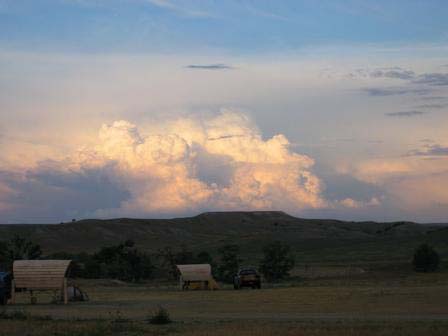
Beautiful Sky, art by Brian Hosey
|


poetry
the passionate stuff

Knock
CL Bledsoe
If that had been a knocking at my door
and not kids tossing firecrackers at the cracking upholstery
 of the street of the street
I would rise like steam waft
to the door open and smile and have something terribly clever
 to say to say
about the nature of time the way it bunches like curtains
 in the hand in the hand
of an agoraphobic god perhaps something
 about sorrow about sorrow
the empty aching bucket a soul becomes
 through lack of use or too much through lack of use or too much
like a discarded light bulb broken at one end
 and letting water seep in and letting water seep in
like an empty womb of light
Maybe it will be a her and I can tell her
about the dream of popcorn I just had
whole potential lives exploding outward
 into something like fuzzy paper into something like fuzzy paper
segue it into asking her if she’d like to see a movie
 tonight tonight
and afterwards though I don’t know how to dance
 we could go dancing we could go dancing
like in old movies romantic flying over the floor
like a steam cleaner
though to be honest
 I’ve never seen any of those movies I’ve never seen any of those movies
just clips moments before I realized
 what they were what they were
and changed the channel


Muse
Arthur Gottlieb
 get off my back, get off my back,
we’re going nowhere together
 you hang around my neck you hang around my neck
like a dead albatross, bringing bad luck.
 the one broken wing the one broken wing
you throw over my shoulder weighs a ton.
 it’s no shawl and i’m no Atlas it’s no shawl and i’m no Atlas
bent on bearing the world’s worries.
once too often
you’ve used me for your own amusement,
 making me believe making me believe
i could walk through mirrors, and then
 crowing when i went to pieces. crowing when i went to pieces.
you sit on the dresser pretending to be
 a glassblower’s bird, a glassblower’s bird,
watching me break me head on the fragile
 menagerie of my own reflections. menagerie of my own reflections.
 Cage-maker, Cage-maker,
get out and take your wings with you.
 i’m sick of canary songs i’m sick of canary songs
and your buzzed beak bearing
 olive branches, olive branches,
while picking my brains clean
 down to the last stanza. down to the last stanza.
i’ll pack in my pen before paying you
 the price of another poem. the price of another poem.
 hey, hey,
don’t mistake patience for procrastination.
 this is the dull lull before the storm. this is the dull lull before the storm.
i can tell you which way the wind is pointed
 without wetting my thumb. without wetting my thumb.
So, before i take aim, fair weather friend,
 blow. blow.




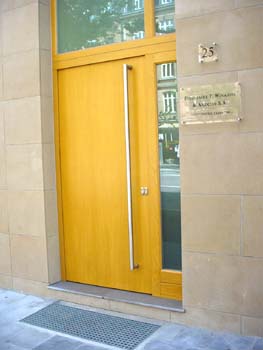
CHANGE?
Chris Major
You sat in a derelict doorway,
holding something resembling a grubby rag,
which twitched, resembled a baby,
and became the wriggling ’bait’
to draw to the floating hand,
that reeled in the odd coin
between spat insults, names and phlegm.
Were you one
that we’d been warned about,
who did this for a living,
had a convertible parked
outside a nice pad?
I watched as you sat,
accepting like a drain
every dirty look and filthy word;
then,
convinced,
I pressed you 5 Euros,
saw you stumble from the shadows,
enter the cake shop
blinking like Lazarus...........


Princess, Pirate, and Angel
Shari O’Brien
I was a fairy princess
that year on Halloween,
my last before I retired
from candy-induced highs
and earnest school yard parades.
I was joined by a peg-legged pirate
and an angel with wings of foil,
believing youth was forever,
but inpatient to grow up.
The pirate sailed the South Seas
and lost a limb in Viet Nam,
the angel flew to Heaven
too many years before her time,
and as for me, I haven’t worn
a tiara since that day.




The Walk with Generic
William Roche
For M.E.G.
China is louder than I expected
Good fireworks though
This apartment is too cramped
This noise outside too intriguing
This television too boring
Walks are nice
I enjoy the scenery of this Asian metropolis
I realize I am not walking alone
A boy walks with me
Nothing special about him
Generic comes to mind
This crowd is huge
I’ll just traverse the edge
We’re still walking together
“Nice day,” he says
“Nice day for a protest,” I think
“Yes,” I say back instead
It certainly is a nice day.
The crowd roars louder
What exactly is going on?
“I enjoyed our walk,” he says
“I did too,” I say
We shake hands and he disappears into the crowd
I see him on the news later that day
Generic leaves my mind
The boy stood up to the tank
In Tiananmen Square


anywhere far from here
Steve DeMoss
A fan sitting in the corner
Not to be punished,
Blows my hair from one side of the room
To the other
And the smoke; from her cigarettes.
I watch as they put themselves out,
Burning slowly. Dragging on.
As this July evening leaves it’s ashes to blow
From one side of the room
To the other.




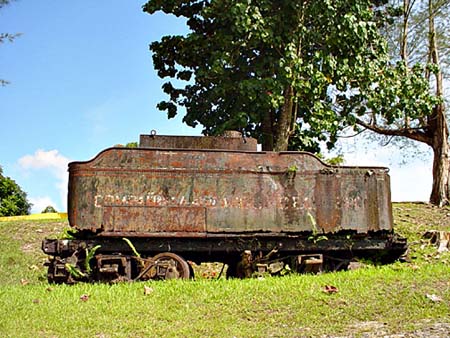
the trains and the bicycles
Steve DeMoss
Father and I have been to the races lately,
Between the trains and the bicycles.
And I swear, the trains win every time,
And father smiles and we walk home.
 A little less silver in his pocket. A little less silver in his pocket.
I laugh as if I understand,
 But can’t. But can’t.
Father is gone, and me, I’ve grown into a man.
So we go down to the races,
Between the trains and the bicycles,
And I put my money on the bicycles.
My son smiles and we walk home together laughing.
 A little less change in my pocket. A little less change in my pocket.



growing younger
Steve DeMoss
where distortion ends and parallel begins
was a travel I intended to,
but could wait.
When it used to be a glass of milk, and then to the moon
I was so very young, still a child.
Now a ride into town on the local bus
after my medicine
is all the excitement one can consider.


Job Listing
John Marsh
 We are seeking someone who prefers park benches and bologna sandwiches to being judged by the likes of us; someone willing to be killed rather than kill; someone who does not want to start a computer every morning and spend their life typing an obituary. We are particularly interested in applicants with experience in one or more of the following: (1) eating in cars (to avoid chatting with colleagues or co-workers); (2) resentment of authority; (3) locking themselves in bathroom stalls; (4) crying when someone criticizes their work; (5) doubts about the value and future of industrial civilization. Successful candidates will receive a competitive salary, an office of their own, and a promise never to bother them again. Searches will begin immediately; for fullest consideration, do not apply—we’ll find you. Or send inflated resume, listless cover letter, and the names of three references whom you suspect of secretly hating you. We are seeking someone who prefers park benches and bologna sandwiches to being judged by the likes of us; someone willing to be killed rather than kill; someone who does not want to start a computer every morning and spend their life typing an obituary. We are particularly interested in applicants with experience in one or more of the following: (1) eating in cars (to avoid chatting with colleagues or co-workers); (2) resentment of authority; (3) locking themselves in bathroom stalls; (4) crying when someone criticizes their work; (5) doubts about the value and future of industrial civilization. Successful candidates will receive a competitive salary, an office of their own, and a promise never to bother them again. Searches will begin immediately; for fullest consideration, do not apply—we’ll find you. Or send inflated resume, listless cover letter, and the names of three references whom you suspect of secretly hating you.





Rose
Patricia Tully
A rose blossoms slowly and so beautifully.
Over time each pedal will open expose the heart of the rose.
With warmth the pedals fall, no longer needed because the heart is so protected
and so trusting.
Once the heart is without its pedals and is truly exposed for the first time, it is
then that it begins to whither and die.
For the truth of its protector no longer warms it, but burns it, slowly destroying
its will to live on.






Untitled
james b nicola
 It must have come to pass while I was out, It must have come to pass while I was out,
or busy. I came home and my old house,
foundations dating back to ‘seventy-six,
the walls to ‘eighty-nine and ‘sixty-two,
the roof to ‘twenty, and, to ‘sixty-four
the latest paint job, and the second floor--
was gone. And in my neighbors’ faces, stares:
their minds, their hearts, had been removed, their souls
as well. And I was transformed suddenly
 into an expatriate at home, into an expatriate at home,
homeless. Once revolutions and regimes
did this, but this time, rationales in tides
of shallow reason, leaving on the strand
 garbage, my old house amidst the dross. garbage, my old house amidst the dross.
I walked the streets at night and mourned the loss
unable to find any place to sleep,
then realized that morning might not come.
In time I found the other dispossessed.
We pass the nights round campfires singing songs
of solidarity and human sense,
while citizens in SUVs drive by.


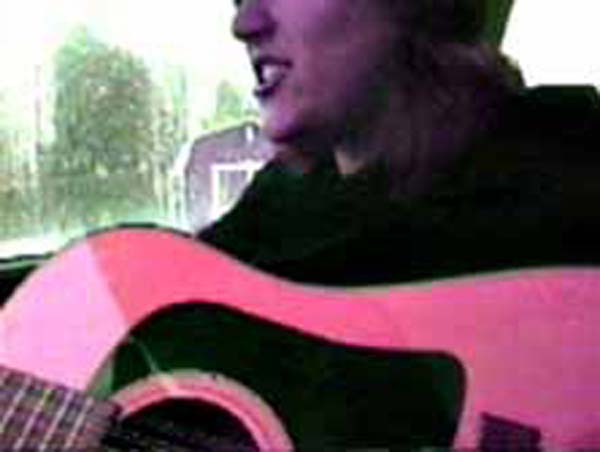
SRV
Brian M. Burke
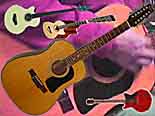 Spots burn my closed eyes
Spots burn my closed eyes
ghosts of light
 not real not real
 not really not really
soon they fade.
Words and music
leave a record
 insubstantial. insubstantial.
All my heroes are dead.


Literary Criticism (4)
Michael Ceraolo
There is one surefire way
for a poet to know when he or she
is doing original and worthwhile work:
immediately,
You spawn a host of bad imitators





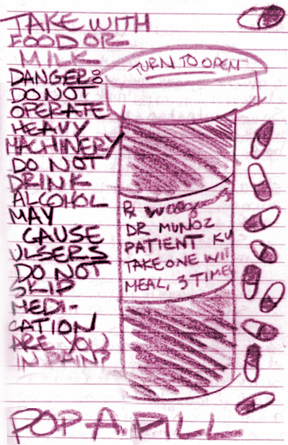
Monthly Excursion
Stacy Dore
Past the man
 handing out pamphlets handing out pamphlets
making proclamations into a mic.
 broadcasting low frequency all broadcasting low frequency all
 the horror. . . the horror the horror. . . the horror
 Past the pair of heavy doors Past the pair of heavy doors
Pussshhhh
 the waiting room is peopled the waiting room is peopled
with mothers’
 bodies that house them: bodies that house them:
some wanted
some unwanted
some still unshowing
 unsure bellies still concave unsure bellies still concave
 not yet rounded not yet rounded
 the signs of new life? the signs of new life?
Past legs, all sizes sticking out
At the counter, they sit
 behind thick bulletproof transparent barrier behind thick bulletproof transparent barrier
 chosen chosen
to protect them
I speak confidently
 slowly, slowly,
most of them preoccupied with multitasking phones and computers and lists of those waiting
in the space now behind me
 She buzzes me in through the double doors that are locked from the inside She buzzes me in through the double doors that are locked from the inside
 into their crisp, clean space into their crisp, clean space
 where i can speak freely where i can speak freely
 without the glass to separate us. without the glass to separate us.
Past the private door
 she finds them she finds them
 pills the man outside said are against the will of god pills the man outside said are against the will of god
 We wait for my receipt We wait for my receipt
 from the outdated printer from the outdated printer
(not yet ink jet)
 I finger the free condoms in the jar tenderly I finger the free condoms in the jar tenderly
secret candy
we talk about new laws
Another jar
 protesting buttons protesting buttons
I put it on the overhead visor, over the seatbelt warning



reading music
(aka hot pants)
Tori Grant Welhouse
as it was the year
of the split shift &
cut time for everybody,
i was bussed
in the dark of
diminishing night,
when i sat in a seat
made for someone bigger,
staring at my own face
in the blank window,
my lips jazzed
with a jumble
of dreams & longing,
in love with
a trombonist
who improvised.
we all came early to
play rhythm & blues.
count basie was in my head,
driving my hip-swinging walk
to a locker where I stood
for the longest time,
thinking about what was
under my coat.
the strangest feel
of nylon and denim,
complicated fabrics
that have an influence
on skin.
the too-layered feel
should have been
indication that this
was not meant to last.
i was not a singer
but here i was
dressed like one.
i didn’t know about style
& the way you wore clothes
was you having it.
we all came early to
play rhythm & blues.
i got tired of the
slowness in the air
& looked to my neighbor,
a girl that blew like me.
she wanted out of the
bubble, too, & showed
me what was under
her coat, which crazily
was a version
of the same.
we wore hot pants.
the hallway could be
any hallway.
the fact that we stood
together could be
true or false,
but the coincidence
of our (was it?)
modesty was very true.
hot did not describe
attractive then.
pants were anything but.
we all came early to
play rhythm & blues.
with horns in our hands
bad fashion was assumed
part of the arrangement,
another way to take a chance
with the notes & pauses.
in the key of conspicuous
more of the details
could be assimilated,
be played.
adding to the melody,
the refrain made memorable,
like a player’s raised eyebrows
was the seam between
one thought & the next.
we shiny-skinned the effort
until our lungs hurt,
until collecting light
we spent a good morning
warming up the metal.
we all came early to
play rhythm & blues.


hula
Tori Grant Welhouse
i make up motion & charge the very air.
my legs rub together. my bare feet stomp.
i am groundswell. i play with currents
that foretell the gathering of a storm
on a far-off scrap of land.
palm trees bend nearly in half.
i have their rapt attention.
oh, what i am capable of!
i can sink fishing boats.
bigger than weather, i am now
the rumble in the earth,
undulating belly, self-consciousness submerged,
adorned with its perennial debris:
lily behind one ear, grass anklet,
leis, leis, leis.
i feel the surge through my feet.
oh, what a rush!
the lava i hide.
the skin i show,
the skirt handmade & tropical,
hothouse blooms the slit up my thigh.
arms, legs, long, dune back
do not yet speak pudenda.
it is hawaii day.
i am entertainment.



LOUNGING LIZARD
G.A. Scheinoha
 He brings a reptilian sense to business. Which has advantages other than the obvious: darting here and fro, large, lidless bug pupils seemingly everywhere at once. His keen paranoid sense for predators has averted more than a few hostile takeovers. He brings a reptilian sense to business. Which has advantages other than the obvious: darting here and fro, large, lidless bug pupils seemingly everywhere at once. His keen paranoid sense for predators has averted more than a few hostile takeovers.
 Sometimes though, it gets out of hand. On the subway, any overt stare is enough to send him scurrying for cover, maybe even crawl into his alligator skin briefcase, the safety of the womb. Sometimes though, it gets out of hand. On the subway, any overt stare is enough to send him scurrying for cover, maybe even crawl into his alligator skin briefcase, the safety of the womb.
 The fact he’s been so successful. . . or carries the aforementioned attache at least, has brought out the protesters. Banners screaming he’s a cannibal, has robbed the flesh off his own kind’s back. The fact he’s been so successful. . . or carries the aforementioned attache at least, has brought out the protesters. Banners screaming he’s a cannibal, has robbed the flesh off his own kind’s back.
 And of course, cold blooded as he is in commerce, even more so, winter really slows him down. Then at his most vulnerable, the company protects him. Somebody usually leaves him atop a desk or against the cubicle wall where he melds with the surroundings. And of course, cold blooded as he is in commerce, even more so, winter really slows him down. Then at his most vulnerable, the company protects him. Somebody usually leaves him atop a desk or against the cubicle wall where he melds with the surroundings.
 They all know, come summer he’ll be back at it again, giving a thousand percent. Guys like that don’t come cheap. You have to make some allowances. They all know, come summer he’ll be back at it again, giving a thousand percent. Guys like that don’t come cheap. You have to make some allowances.



New York Subway
Stephanie Nolasco
Thunderous, rolling, rumbling, contraption
Bouncing, thundering mechanical phallus
Bursting within hollow caves
In rat infestations
Squealing the eerie sound of tearing flesh.
Sorrowful memories
Of past journeys
Continue to comply.
Flowing away
At each concrete ssstttoooppp.
Pause.
Rock my carcass, conductor
Rock your crying babe
Drooping away in slow slumber
In mid-afternoon catastrophe
Of unwashed Vietnam soldiers begging for
Stolen fruit.
Flowing thoughts will slide and fade
Slide and fade
Around, under,
Frozen.



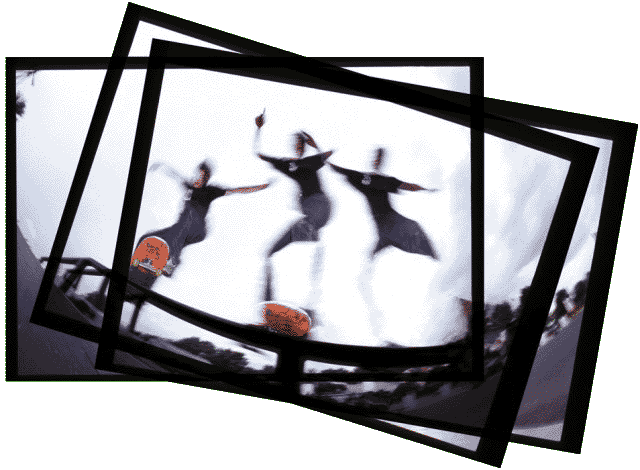
October 14 2004 02-48-32, art by David Matson
|


we leave nothing behind
Edward Mycue
what we experience we are
much passes through us
be we leave nothing behind
what we are we are
what we have been is us
what we left is nothing
we leave nothing behind
an earthworm caught in time
much passes through us
what we have been we were
what is left is nothing
we leave nothing behind


Had the Craziest Dream
 Last Night Last Night
Snelling was a greater
Governor than most men
which tried to pull VT
into twentieth century
Nelson favors New York
Dreams were telling me
Jews will not eat pork
Howard Dean is beastly
In this business world
of American Poetry Inc
there were hot flashes
sycophants not related
just US dream smashers
(c) 2005 Frank Anthony


Rise When Sun Comes Up
 Another Day To Work Another Day To Work
Their dreaming of work
for every man in world
similar only different
in amount compensation
Peasants work at earth
for the benefit of man
for US starvation wage
keep body and soul one
The top of the pyramid
Masonic All Seeing Eye
Grand Shriner of World
balances His Holy Wars
USA proper equilibrium
(c) 2005 Frank Anthony



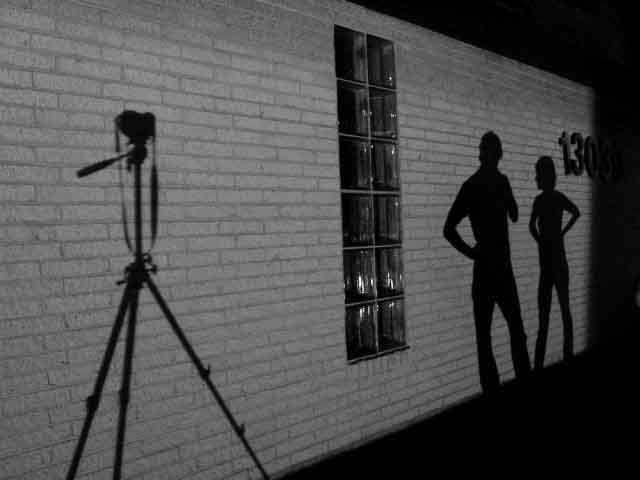
10 G, art by Christine Sorich
|


prose
the meat and potatoes stuff
THE GARDEN OF REMEMBRANCE
A. McIntyre
 The clock struck six. News, screamed my aunt. The BBC pounding through the house. I stood in the doorway, watching the swallows flitting about the eves. Butterflies shimmering through the roses like cellophane, I had never seen so many. I tried to light the cigarette again. I held my arm with the other hand but it was no good. Weeping, I marched to the lobby. The cat stared unblinking as I removed the Pepsi. Giving it the finger, I guzzled the liquid, then I filled the tankard. Your mother’s in the garden, my aunt yelled, I don’t want to be disturbed, I’ve got a lot to do for supper so why don’t you keep her company. The clock struck six. News, screamed my aunt. The BBC pounding through the house. I stood in the doorway, watching the swallows flitting about the eves. Butterflies shimmering through the roses like cellophane, I had never seen so many. I tried to light the cigarette again. I held my arm with the other hand but it was no good. Weeping, I marched to the lobby. The cat stared unblinking as I removed the Pepsi. Giving it the finger, I guzzled the liquid, then I filled the tankard. Your mother’s in the garden, my aunt yelled, I don’t want to be disturbed, I’ve got a lot to do for supper so why don’t you keep her company.
 Putting on sunglasses, I wandered outside. I placed the Pepsi on the grass, pulling a chair over. My mother was sitting in a deck chair nursing a Scotch, Ah, there you are. I won’t offer you any, of course. You’re drinking cola again, it’s so good to see. Charlotte must be relieved. Sit down and let’s have a nice chat, it’s so nice to have some time at last. The light crackling, I grimaced, my mouth too dry to speak. She stared, Why are you shivering? It’s nothing, I replied. Blessing the Russians, I gulped the Pepsi. Clearing her throat, she commenced, Did I tell you about my trip to South Africa? No, I murmured, You didn’t. I drank more Pepsi. The shaking diminished. I lit the cigarette. By the way, you really ought to stop smoking, she sniped. It’s really none of your business, I countered. Her jaw tightened, Well, I met some very interesting people in Cape Town, very pleasant. They had a yacht, quite remarkable really, they sailed it from New York. Good Lord, I interjected without interest, Really? Yes, she continued, I met them one evening, we all went out to dinner, in the waterfront you know, where we had dinner with your father that time, before his decline. She sipped demurely, Well it’s all changed, must be more than thirty years now, all done quite beautifully, lots of restaurants and cafes, spotless, impossible here of course. You should move, I suggested, Live there during the winter, it would do you the world of good, then you wouldn’t complain about the cold and everything else. Why don’t you go, why don’t you go for a long trip? I’ve thought about it, she agreed, As you know, but there are so many practicalities, and your aunt isn’t getting any younger. Putting on sunglasses, I wandered outside. I placed the Pepsi on the grass, pulling a chair over. My mother was sitting in a deck chair nursing a Scotch, Ah, there you are. I won’t offer you any, of course. You’re drinking cola again, it’s so good to see. Charlotte must be relieved. Sit down and let’s have a nice chat, it’s so nice to have some time at last. The light crackling, I grimaced, my mouth too dry to speak. She stared, Why are you shivering? It’s nothing, I replied. Blessing the Russians, I gulped the Pepsi. Clearing her throat, she commenced, Did I tell you about my trip to South Africa? No, I murmured, You didn’t. I drank more Pepsi. The shaking diminished. I lit the cigarette. By the way, you really ought to stop smoking, she sniped. It’s really none of your business, I countered. Her jaw tightened, Well, I met some very interesting people in Cape Town, very pleasant. They had a yacht, quite remarkable really, they sailed it from New York. Good Lord, I interjected without interest, Really? Yes, she continued, I met them one evening, we all went out to dinner, in the waterfront you know, where we had dinner with your father that time, before his decline. She sipped demurely, Well it’s all changed, must be more than thirty years now, all done quite beautifully, lots of restaurants and cafes, spotless, impossible here of course. You should move, I suggested, Live there during the winter, it would do you the world of good, then you wouldn’t complain about the cold and everything else. Why don’t you go, why don’t you go for a long trip? I’ve thought about it, she agreed, As you know, but there are so many practicalities, and your aunt isn’t getting any younger.
 I leaned round watching my aunt vigorously washing some lettuce, her stern gaze focused on the sink. Anyway, what was I saying? She sipped the Scotch. Yachts, I prompted, People from New York. Oh yes, well, the wife was very attractive, late twenties, the husband in his fifties, I assumed it was a second marriage or even a third. Maybe a fourth, I mumbled, Or a fifth. My mother frowned, Well, she was wearing a headscarf, very nice, and I commented on it, it was really lovely, I think it was Balinese, I thought of you because you’d been to Bali, she was so attractive. Really? I said not understanding why this obscure meeting should deserve such detail. I finished the tankard. Well, she wore it everywhere, and do you know why? No, I said. My mother took a large sip, She had just had a brain tumor removed. It was her last trip. She had about two months to live. She’s dead now. They spread her ashes at sea. I leaned round watching my aunt vigorously washing some lettuce, her stern gaze focused on the sink. Anyway, what was I saying? She sipped the Scotch. Yachts, I prompted, People from New York. Oh yes, well, the wife was very attractive, late twenties, the husband in his fifties, I assumed it was a second marriage or even a third. Maybe a fourth, I mumbled, Or a fifth. My mother frowned, Well, she was wearing a headscarf, very nice, and I commented on it, it was really lovely, I think it was Balinese, I thought of you because you’d been to Bali, she was so attractive. Really? I said not understanding why this obscure meeting should deserve such detail. I finished the tankard. Well, she wore it everywhere, and do you know why? No, I said. My mother took a large sip, She had just had a brain tumor removed. It was her last trip. She had about two months to live. She’s dead now. They spread her ashes at sea.
 I leaned back in the chair, staring at the sky. I wonder why you have to talk about something like that at this precise moment, I enunciated, Like discussing cadavers at a picnic. My mother glowered, I thought you’d be interested. My hands shaking, I inhaled smoke, fighting to keep my voice steady, Well, I find it very odd that you have to raise the specter of something so awful at this precise time. You know how things have been, with Charlotte’s health, it’s really very cruel, very insensitive, it’s almost as if you’re doing it deliberately. I’m having a perfectly good time, she trilled, Aren’t you? I remained silent. The sunlight shining rancid butter orange through the trees. I leaned back in the chair, staring at the sky. I wonder why you have to talk about something like that at this precise moment, I enunciated, Like discussing cadavers at a picnic. My mother glowered, I thought you’d be interested. My hands shaking, I inhaled smoke, fighting to keep my voice steady, Well, I find it very odd that you have to raise the specter of something so awful at this precise time. You know how things have been, with Charlotte’s health, it’s really very cruel, very insensitive, it’s almost as if you’re doing it deliberately. I’m having a perfectly good time, she trilled, Aren’t you? I remained silent. The sunlight shining rancid butter orange through the trees.
 I refilled the tankard, Anyway, let’s change the subject, I didn’t tell you, Charlotte and I have decided to start a family, we both agreed it might be a solution, something to aim for. Just in case. Life must go on, don’t you think? It hasn’t been easy for her as you know. My mother drained the Scotch, tossing the ice into a flowerbed. You’ll regret it, she said standing up, It’s never over, they’re with you for life. I refilled the tankard, Anyway, let’s change the subject, I didn’t tell you, Charlotte and I have decided to start a family, we both agreed it might be a solution, something to aim for. Just in case. Life must go on, don’t you think? It hasn’t been easy for her as you know. My mother drained the Scotch, tossing the ice into a flowerbed. You’ll regret it, she said standing up, It’s never over, they’re with you for life.




poetry translations

Czech:
translated by Howard Shindo
(The Third or fourth Fourth of September)
älen urãitù Tercie ãi ãtvrtina ätvrtina of Záû
nûjakù ãas tebe spravedlivù mût aï k cenûnû zubû a baissista ono
vyjût najevo cvalûk tebe mût humoristickù
pipustit aï k ty sám aby you’ve platû nesprávnù
spravedlivù cenûnû zubû a baissista ono a archiv jût s duchem ãasu cvalûk
brát tvûj lék , dostat ko‰em celù obchod nad s.


Hungarian:
Translation by Helena Wolfe
(I Am Always The One)
én mindig a egy
én mindig a egy
aki mondta
felfedez a bábu
minden nekem van megtett
van megtöröl -a orr
és tiszta -a szobák
és most nekem van -hoz
tiszta megjelöl az én -m élet
és nekem van
senki sem segûteni neki én


 Serbian:
Serbian:
Translation by Colin Madison
(Mask)
Maska
krabuljni
ples
pridrïavanje
odijevanje
kostim
lice
suzan
bomba
maska
plaça
spoj
reçi
visok
maska
nadati
se
nijedan


Indonesian:
Translation by Mackenzie silver
(self-destructive)
self-merusak
Saya sudah self-merusak terlebih dahulu
dan anda suka pada saya then
mungkin saya sebaiknya kembali
kembali sampai hari-hari itu
ketika tidak berarti yang saya dengan.
Mengapa akan itu zat
kecuali kalau adalah anda?




Filipino:
Translation bu Sydney Cooke
(Now I’m Strong)
Ngayon I’m Malakas
di ang mahati ako lagi diwa ako was nag-iisa
ako was tratuhin nang masama
ka tumulong ako nina giving ibigin at giving umasa
ngayon I’m malakas







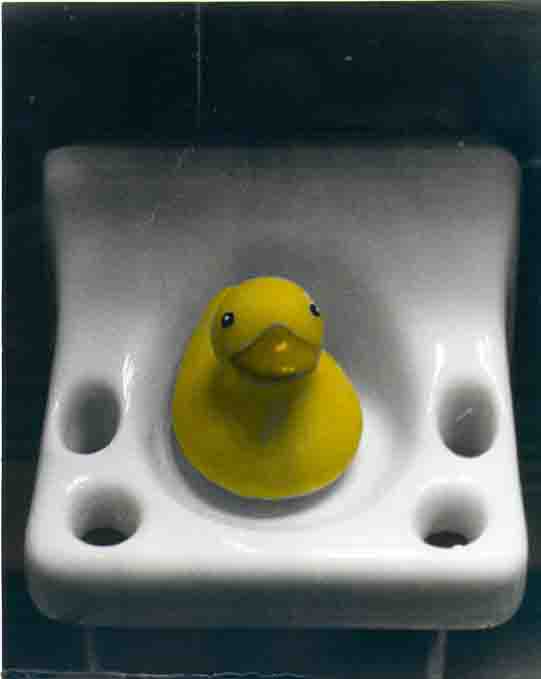
duck, by Mark Gaudet
|


poetry
Morning in San Francisco
Jason Robinson
suddenly awake
from a fitful sleep
i could hear noise
from the green gulch
where the low humming mowers
were being readied for their trade
but in the fog
my spirit mistook the sounds
for bagpipes playing
a mournful dirge
in a funeral procession
across the hill
though i knew that no one
had died that day
my soul still ached
as if they had





|

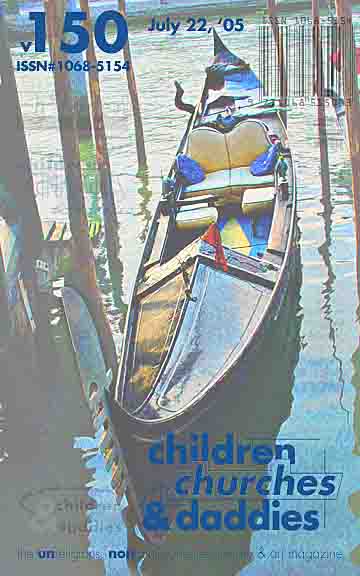
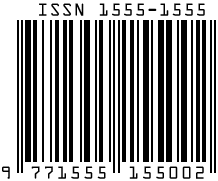

















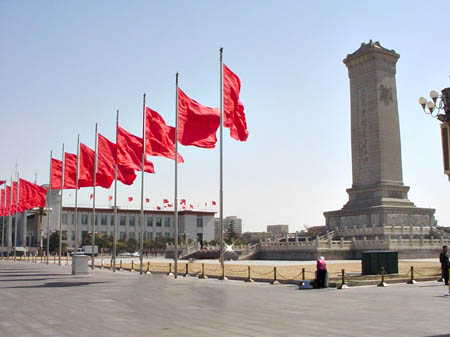
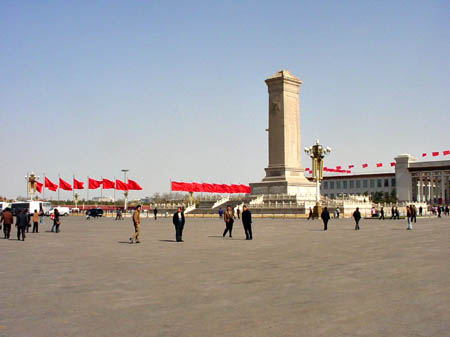













 Spots burn my closed eyes
Spots burn my closed eyes










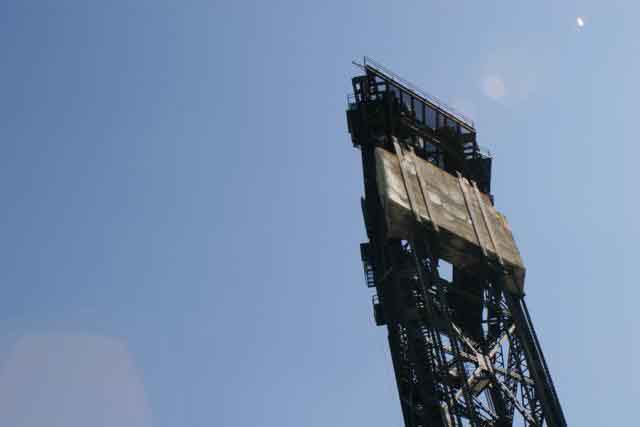
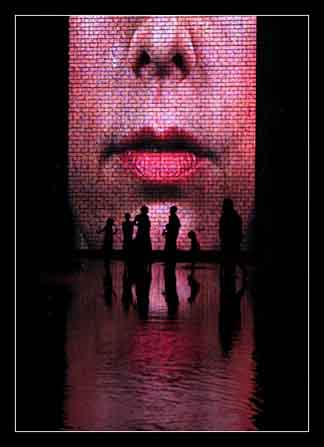
 Serbian:
Serbian:






